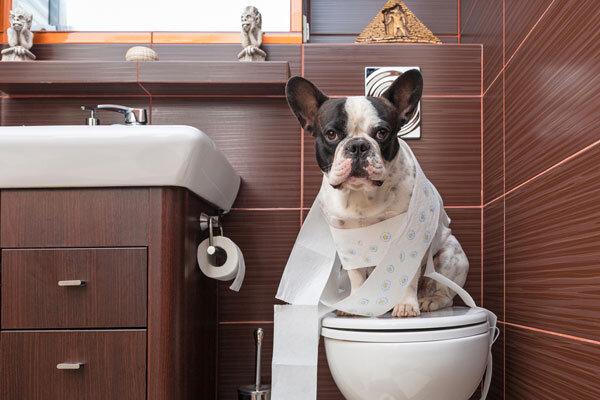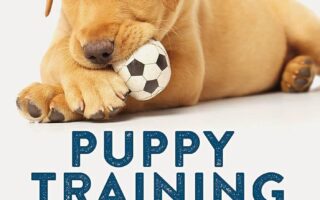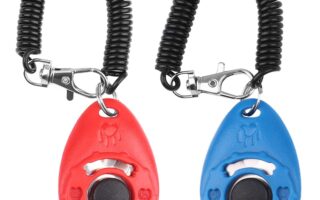Welcoming a new puppy into your home is a thrilling adventure, filled with playful antics and heartwarming moments. However, the journey to a well-trained companion begins with a crucial rite of passage: toilet training. This essential process not only fosters a clean environment but also strengthens the bond between you and your furry friend. With a medley of methods, tips, and techniques available, determining the best approach can feel overwhelming. In this article, we’ll explore the most effective strategies for toilet training your puppy, helping you navigate this important milestone with patience and understanding. Whether you’re a first-time pet owner or a seasoned canine caregiver, you’ll find expert insights and practical advice to transform this challenge into a rewarding experience. Get ready to set the stage for a lifetime of good habits and joyful moments!
Table of Contents
- Understanding Your Puppys Behavior for Effective Training
- Choosing the Right Supplies and Tools for Successful Toilet Training
- Establishing a Consistent Routine to Reinforce Good Habits
- Positive Reinforcement Techniques to Encourage Progress
- Q&A
- In Conclusion
Understanding Your Puppys Behavior for Effective Training
When you’re embarking on the journey of toilet training your puppy, understanding their behavior is crucial. Puppies are naturally curious creatures, constantly exploring their environment and learning about their surroundings through their senses. Recognizing signs that your puppy needs to relieve themselves, such as circling, sniffing, or whining, can be immensely helpful. By being vigilant and responsive to these cues, you can foster a positive association with going outdoors. This not only builds a routine but also helps your puppy feel secure in their ability to communicate their needs.
Incorporating a consistent schedule into your puppy’s daily routine can dramatically enhance the training process. Establishing regular feeding times leads to predictable bathroom breaks, making it easier for both you and your puppy. Here are a few best practices to keep in mind:
- Routine: Take your puppy outside after meals, playtime, and naps.
- Rewards: Use treats and praise immediately after your puppy eliminates outside to reinforce the behavior.
- Supervision: Keep a close eye on your puppy indoors to catch any pre-potty signals.
Moreover, creating a designated spot outdoors can help your puppy to associate that area with bathroom breaks. Clear guidance and positive reinforcement will transform the training experience into a bonding opportunity. With patience and consistency, your puppy will learn quickly the appropriate place to relieve themselves.
Choosing the Right Supplies and Tools for Successful Toilet Training
When embarking on the journey of toilet training your puppy, having the right supplies and tools can make all the difference. The first essential item you’ll want to invest in is puppy pads. These absorbent materials assist in guiding your puppy towards designated spots and protect your floors from accidents. Additionally, a reliable enzymatic cleaner is crucial for effectively eliminating odors and preventing your puppy from returning to previously soiled areas. To monitor your puppy’s progress, consider using a journal or a training app, which can help you keep track of their bathroom habits and notice patterns over time.
Another great addition to your toolkit is a pet-friendly gate or pen, which defines a controlled space for your puppy while they’re learning. This not only keeps them safe but also limits their access to unwanted areas. If you’re planning to take them outdoors for training, a lightweight leash is important for guiding them during walks. Don’t forget to have some treats on hand, as positive reinforcement plays a critical role in effective training. Here’s a quick reference table summarizing the essential supplies:
| Supplies/Tools | Purpose |
|---|---|
| Puppy Pads | Guide puppy and protect floors |
| Enzymatic Cleaner | Eliminate odors effectively |
| Pet-friendly Gate | Control puppy’s space while training |
| Lightweight Leash | Guide during outdoor training |
| Treats | Provide positive reinforcement |
Establishing a Consistent Routine to Reinforce Good Habits
Establishing a structured routine is essential for successful toilet training, as it helps your puppy learn when and where they should go. By setting specific times for feeding, play, and bathroom breaks, you can train your furry friend to anticipate potty needs. Consider implementing the following strategies:
- Consistent Feeding Schedule: Feed your puppy at the same times each day to regulate their bowel movements.
- Regular Bathroom Breaks: Take your puppy outside first thing in the morning, after meals, and before bedtime.
- Supervised Playtime: Keep an eye on your puppy during playtime to catch early signs of needing to go, such as sniffing or circling.
Additionally, positive reinforcement plays a vital role in cementing these good habits. Whenever your puppy goes outside to relieve themselves, shower them with praise, treats, or playtime. This not only creates a positive association with going outside but also encourages them to repeat the behavior. To visualize their progress, you can create a simple tracking table:
| Day | Bathroom Breaks Taken Outside | Accidents Inside |
|---|---|---|
| Monday | 5 | 1 |
| Tuesday | 6 | 0 |
| Wednesday | 5 | 2 |
Positive Reinforcement Techniques to Encourage Progress
Toilet training a puppy can be a rewarding experience when approached with patience and positivity. Using positive reinforcement techniques helps create a supportive environment, encouraging your puppy to associate potty time with praise and rewards. Begin by establishing a consistent schedule for bathroom breaks, taking your puppy outside after meals, naps, and playtime. Each time your puppy successfully relieves themselves outdoors, follow up immediately with enthusiastic praise and a small, tasty treat. This association reinforces the desired behavior, making your puppy more likely to repeat it in the future.
In addition to verbal praise and treats, consider incorporating clicker training into your potty training routine. The sound of the clicker can serve as a clear signal that your puppy has done something right. Here’s a simple table to illustrate a basic training reward system:
| Action | Reward |
|---|---|
| Successful outdoor potty | Verbal praise + treat |
| Going to the door to signal need | Immediate attention + praise |
| Holding until outside | Extra playtime + praise |
By consistently rewarding good behavior while remaining patient and understanding during accidents, you can create a positive learning experience for your puppy. This approach will not only make potty training more effective but also strengthen the bond between you and your furry friend.
Q&A
Q&A: Best Way to Toilet Train a Puppy
Q1: When is the best time to start toilet training my puppy?
A1: The best time to start toilet training your puppy is as soon as you bring them home. Early socialization and routine-setting are key. Puppies can typically start the process as early as 8 weeks old, but be patient as they learn and adjust to their new environment.
Q2: What is the most effective method for toilet training?
A2: One of the most effective methods is the “positive reinforcement” approach. This involves taking your puppy outside frequently, especially after eating, drinking, and waking up. When they relieve themselves outside, reward them immediately with praise and a treat to reinforce the behavior.
Q3: How often should I take my puppy outside?
A3: A good rule of thumb is to take your puppy out every hour while they’re still learning. Additionally, take them out after meals, naps, and playtime. The general guideline is to add one hour to their age in months (e.g., a 3-month-old puppy should go out every 3 hours).
Q4: What signs should I look for that my puppy needs to go outside?
A4: Look out for signs like circling, sniffing the ground, whining, or heading towards the door. Every puppy is different, so pay attention to their individual cues and act quickly to take them outside when you notice these behaviors.
Q5: What should I do if my puppy has an accident indoors?
A5: Accidents happen, especially during the training process. Stay calm and avoid scolding your puppy. Clean the area thoroughly to remove any lingering scent that might encourage them to go there again. Instead, redirect your puppy to the proper outdoor location for toileting.
Q6: Should I use a crate for toilet training?
A6: Yes, crate training can be a useful tool for toilet training. Dogs naturally avoid soiling their sleeping area. By using a crate, you can help your puppy develop bladder control. Ensure that the crate is sufficiently sized—big enough for your puppy to stand, turn around, and lie down comfortably, but not so big that they can eliminate in one corner and sleep in another.
Q7: How long will it take to fully toilet train my puppy?
A7: The timeline can vary greatly depending on the puppy’s age, breed, and consistency of training. Most puppies can be fully toilet trained within 4 to 6 months, but some might take longer. Consistency and patience are key!
Q8: Can I use puppy pads or indoor toilets? Are they helpful?
A8: Puppy pads can be a useful transitional tool, especially for those living in apartments or harsh weather conditions. However, using them can sometimes create confusion if you’re aiming for outdoor training. If you choose to use them, gradually move the pads closer to the door and eventually outside to help your puppy understand where they should go.
Q9: What if my puppy just won’t seem to learn?
A9: If you’re struggling, consider consulting a professional trainer or veterinarian. They may provide insights into underlying issues, such as health concerns or behavioral patterns, and offer personalized strategies for your specific situation.
Q10: Any final tips for successful toilet training?
A10: Yes! Stay consistent with your routine, be patient, and keep a positive attitude. Celebrate small victories, and don’t forget that every puppy is unique. With time and effort, you will nurture a well-trained furry companion!
—
Happy training, and may your puppy soon master their bathroom etiquette!
In Conclusion
As you journey through the rewarding experience of toilet training your puppy, remember that patience and consistency are your most valuable allies. Each wagging tail and playful bounce is a reminder of the bond you’re building through this process. There may be moments of laughter, a few missteps, and even some surprises along the way, but rest assured that with love and persistence, your furry friend will master the art of bathroom etiquette in no time. By establishing a routine, using positive reinforcement, and understanding your puppy’s unique needs, you’re laying the groundwork for a happy and harmonious home. Embrace the journey, celebrate the small victories, and cherish the time spent together—before you know it, your little one will be a pro at potty training, creating joyful memories with every step forward. Happy training!



